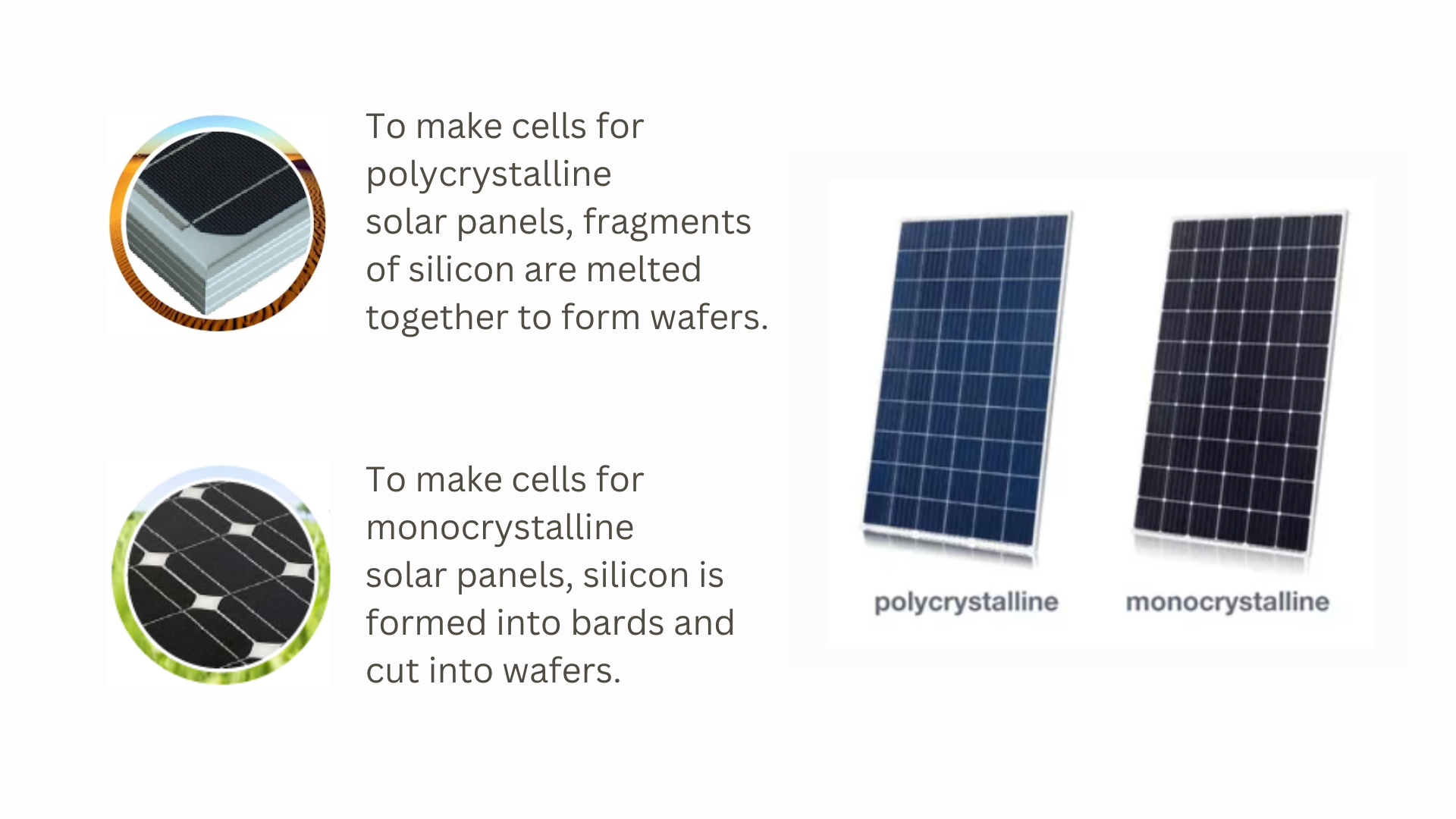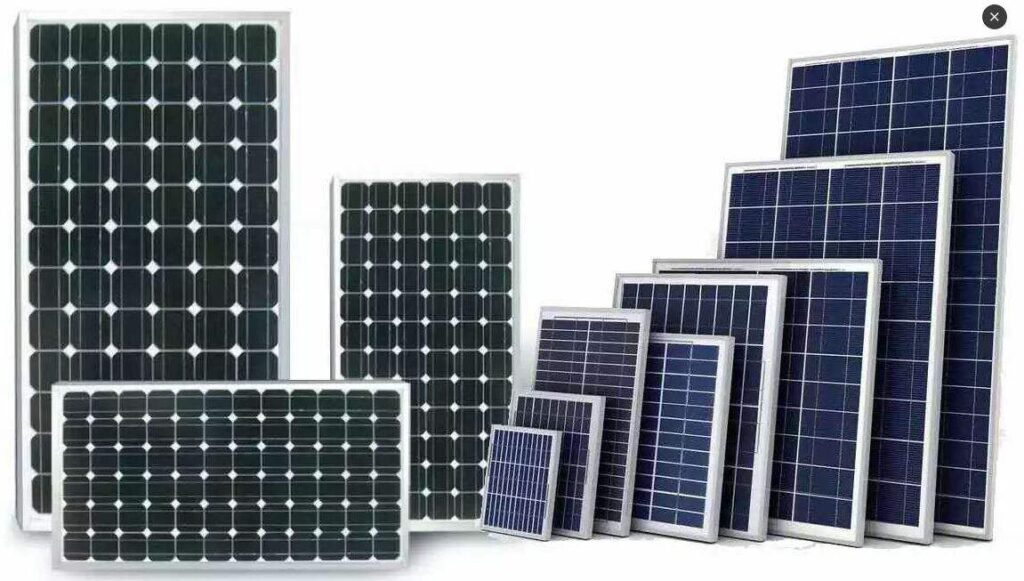
Silicon is the most common base material for solar panels. The reason for this is primarily due to the nature of silicon. It is a semiconductor with free electrons, which generates electricity. In this article, we will dive into the specifics of the two types of solar panels.
Despite being more expensive, monocrystalline solar panels use less space. Monocrystalline Solar Panels take up less space. Polycrystalline Solar Panels require more space. It is, however, the same amount of electricity that will be produced by both 220 Watts.
Photovoltaics based on silicon account for almost 90% of the world’s production. It is the purity of silicon that makes silicon-based solar panels different. Do you know what this means? Solar cells convert sunlight into electricity better when silicon molecules are aligned perfectly. It is called a photovoltaic effect.
Solar panels are more efficient when they are pure, but enhancing purity is costly. Your primary concern may not be efficiency. The most important factors for most of us are cost and space efficiency.
This type of silicon is high-purity and is recognized by its external uniform coloring and uniform appearance. Mono-crystalline silicon solar cells can be differentiated from other types of silicon by their external even coloring and uniform appearance.
MCSE is made of silicon ingots that are cylindrical in shape. The goal is to enhance their performance and lower the cost of a single Monocrystalline Solar cell. Silicon wafers are made by cutting four sides out of cylindrical ingots, giving them their characteristic look.
The edges of polycrystalline silicon cells, however, are perfectly rounded and rectangular.

What are the advantages of Monocrystalline Solar Panels?
1. Since they are made of the highest-grade silicon, they have the highest efficiency rates. More or less 15%-20% of silicon is efficient
2. Space-saving. The space they require is minimal. Compared to other types, they also require the least amount of space due to their high power output. Monocrystalline Solar Panels produce four times more electricity than thin filmed solar panels.
3. In addition, they live the longest. A solar cell’s efficiency is higher than that of a solar panel/module as a whole.
What are the disadvantages of Monocrystalline Solar Panels?
There is a high price tag attached to these. The reason why Polycrystalline and thin film may be better choices for many is because of this, especially if you have a lot of space.
The entire circuit can fail if the solar panel is partially covered with shade, dirt, or snow. Inverters must be replaced by micro-inverters instead of central string inverters. Microinverters will prevent shading issues from affecting the entire solar array if you think coverage will cause problems.
Czozhralski is a process used to produce Monocrystalline silicon. As a result, large cylindrical ingots are produced. The cylindrical ingots are cut into four sides to make silicon wafers, which results in a large amount of waste silicon.
It is more efficient to use monocrystalline solar panels in warm weather. Temperature increases have an adverse effect on performance. However, polycrystalline solar panels are less efficient in warm weather. It is not a concern for most homeowners to worry about the temperature.
The market was introduced to polycrystalline silicon in 1981, also known as polysilicon and multicrystalline silicon. There is no need for the Czozhralski process in this case. Raw silicon is melted and poured into a square module, cooled, and cut into perfectly square wafers.
What are the advantages of Polycrystalline Solar Panels?
1. It is a simple process, it is less expensive, and it produces much less waste silicon.
2. The heat tolerance of polycrystalline solar panels is slightly lower than that of monocrystalline solar panels. They can be shorted by heat, but this is a minor effect. Disadvantages of Polycrystalline Solar Panels.
The above is a brief introduction to monocrystalline and polycrystalline solar panels, as well as their major differences. In this article, we have enumerated just two of the main types of solar panels.
Thanks for your time.

